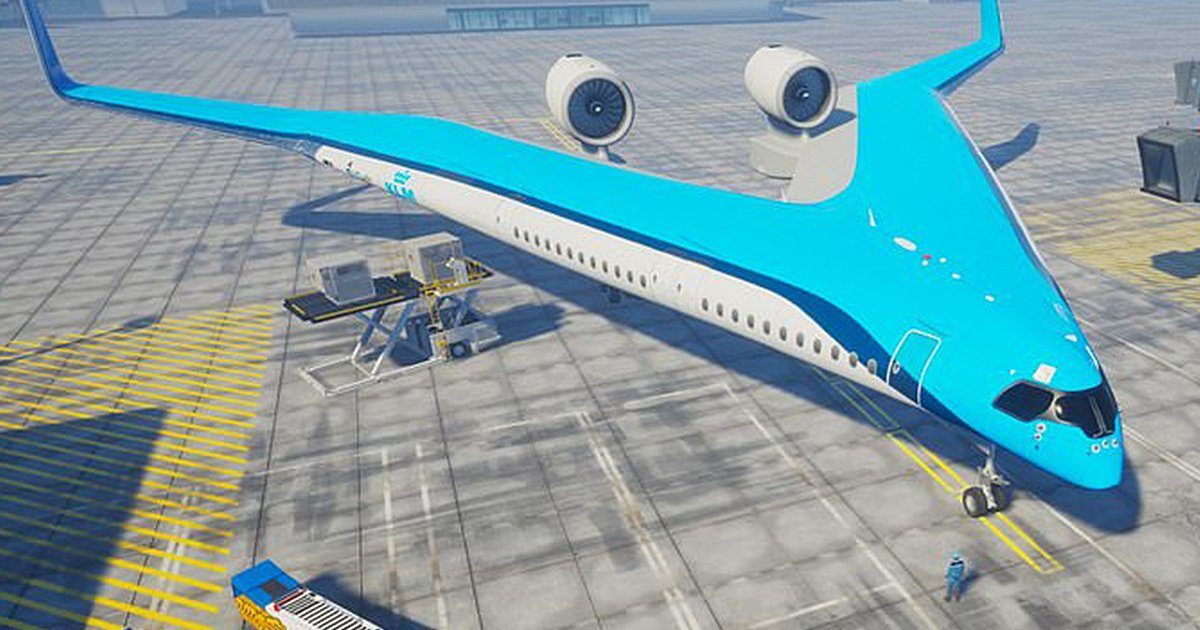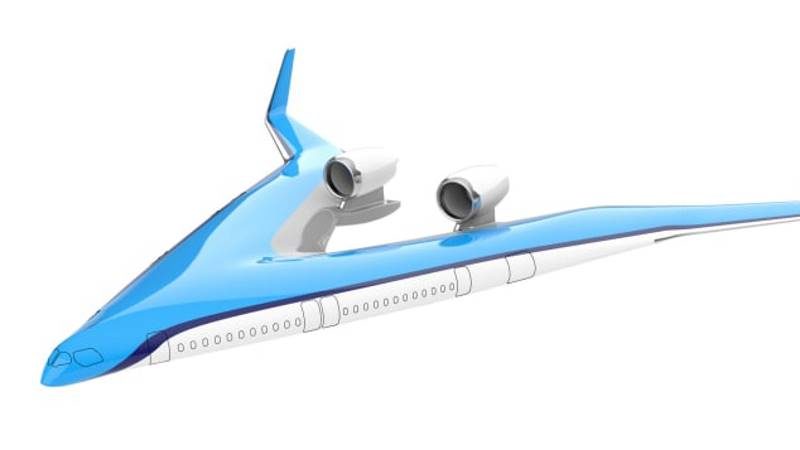
The design has the same wingspan as existing planes and is able to carry up to 314 passengers, while the aircraft itself widens diagonally backwards from its nose to create the V-shape.
As reported by CNN, the Flying-V design was conceived by Justus Benad, a student at the Technical University of Berlin at the time, and was developed by researchers at the Delft University of Technology in the Netherlands, aka TU Delft. Its futuristic design ensures that passengers will be seated within the wings, along with the fuel tanks and cargo. Not only that, but the airline claims the plane will use 20 per cent less fuel than the Airbus A350-900, despite carrying a similar number of passengers. Pieter Elbers, CEO and president of KLM, said in a statement:
Concept video:
''In recent years, KLM has developed as a pioneer in sustainability within the airline industry.''''We are proud of our progressive cooperative relationship with TU Delft, which ties in well with KLM's strategy and serves as an important milestone for us on the road to scaling-up sustainable aviation.''Project leader Roelof Vos said such innovation was needed as a stepping stone to greater efficiency, particularly because aviation contributes to around 2.5 per cent of global CO2 emissions.
Vos told CNN:
''The industry is still growing, so we really need to look at more sustainable airplanes. We cannot simply electrify the whole fleet, as electrified airplanes become way too heavy and you can't fly people across the Atlantic on electric airplanes - not now, not in 30 years.''''So we have to come up with new technologies that reduce fuel burn in a different way. We've been flying these tube and wing airplanes for decades now, but it seems like the configuration is reaching a plateau in terms of energy efficiency.''
''The new configuration that we propose realizes some synergy between the fuselage and the wing. The fuselage actively contributes to the lift of the airplane, and creates less aerodynamic drag.''Furthermore, the design mirrors the A350's 213 feet wingspan, meaning it will be able to make use of existing airport infrastructure. Researchers hope to fly a scale model this September, while a mock-up of the new cabin design will be open to the public at Amsterdam's Schiphol airport in October. The completed plane is expected to enter service between 2040 and 2050.




Reader Comments
hold on!
Mum dies after shunning NHS treatment for curable cancer and going vegan instead
A mum who was diagnosed with treatable breast cancer has died after shunning medicine in favour of living a vegan and holistic lifestyle. Katie Britton-Jordan, from Dalbury Lees, Derbyshire, was...I'll be giving it a miss, a old fashioned 737, any day, because? I can fly one
All good then:-)
I hope that they will push forward for once. Make something again.